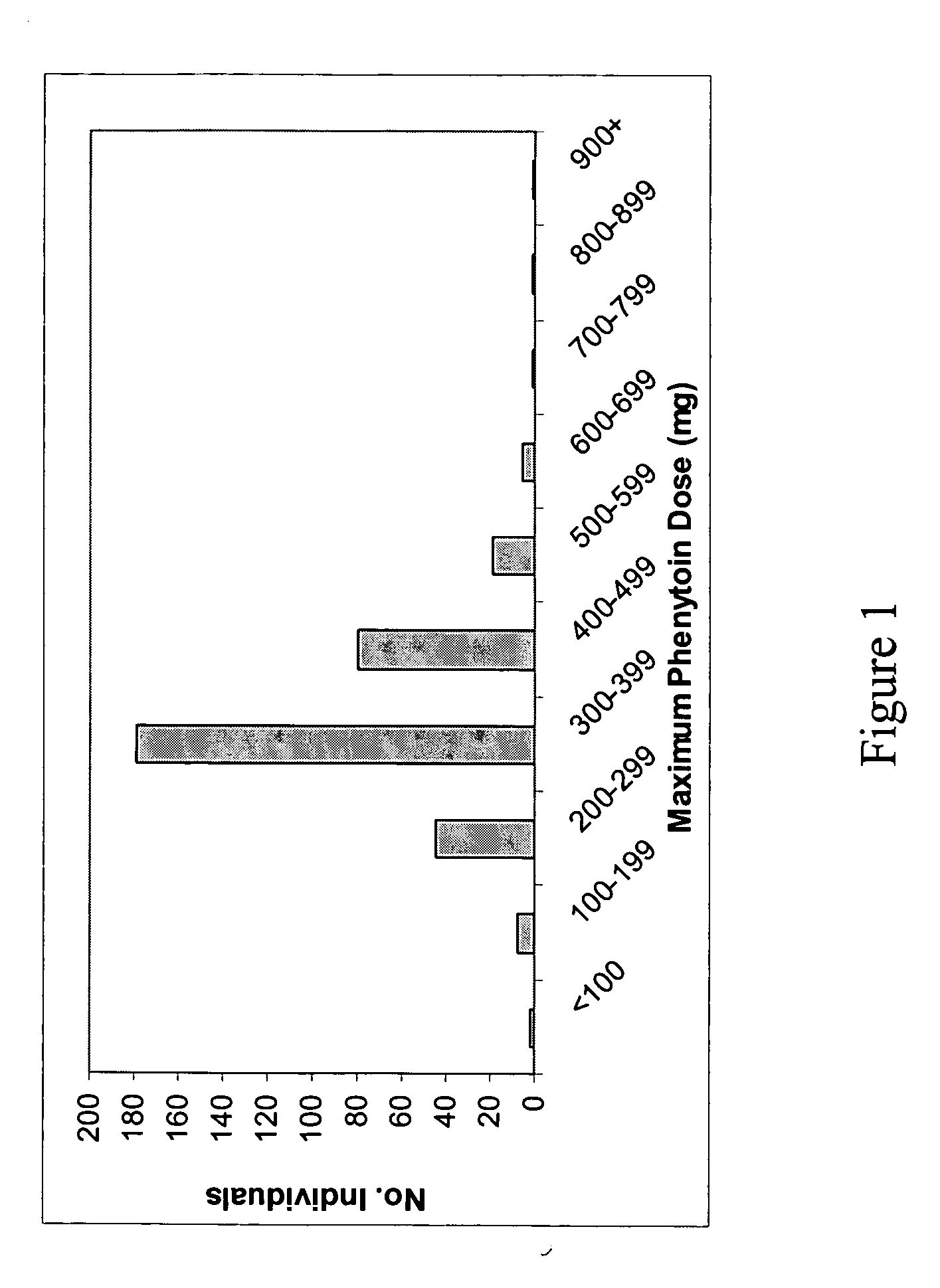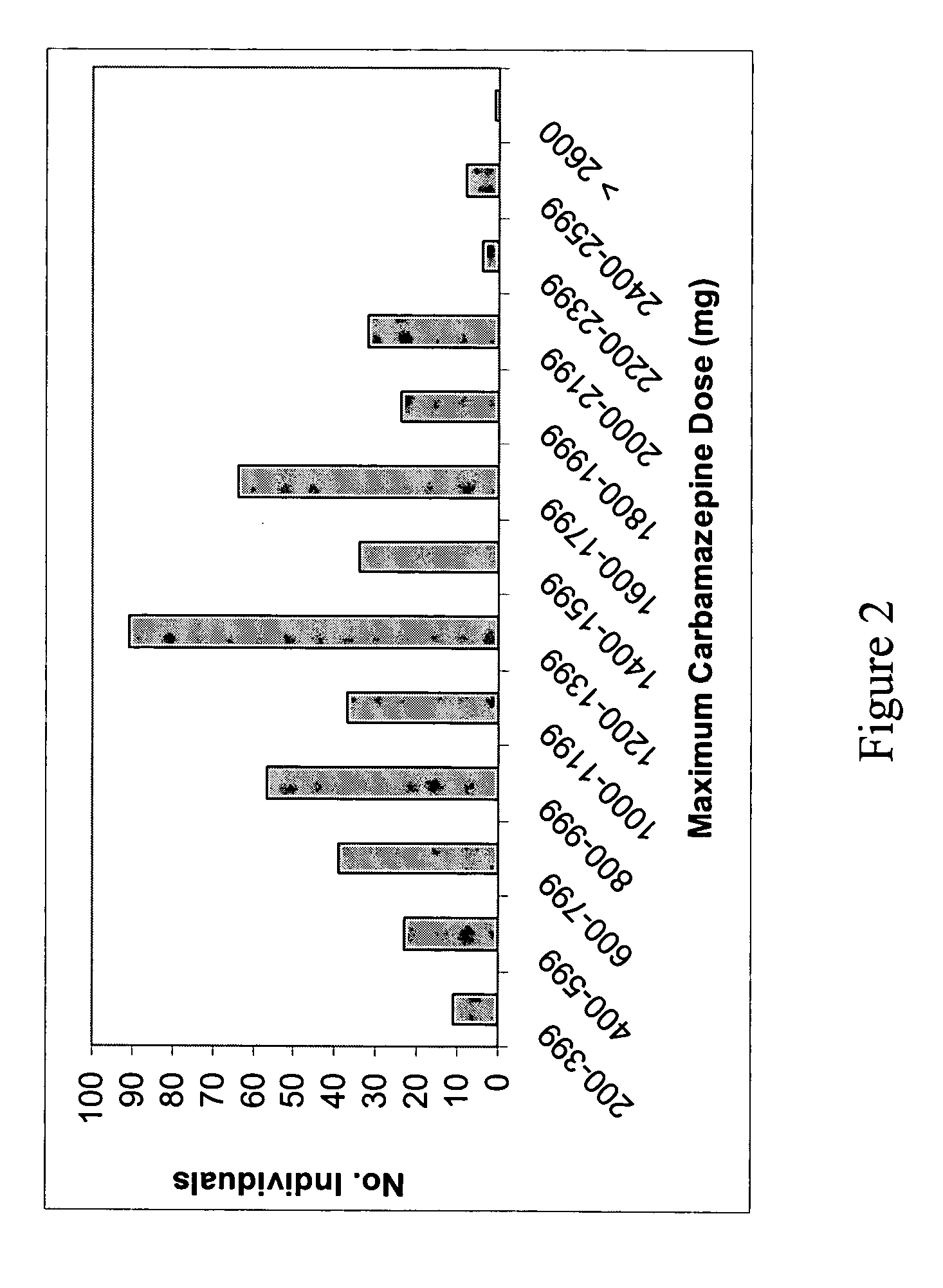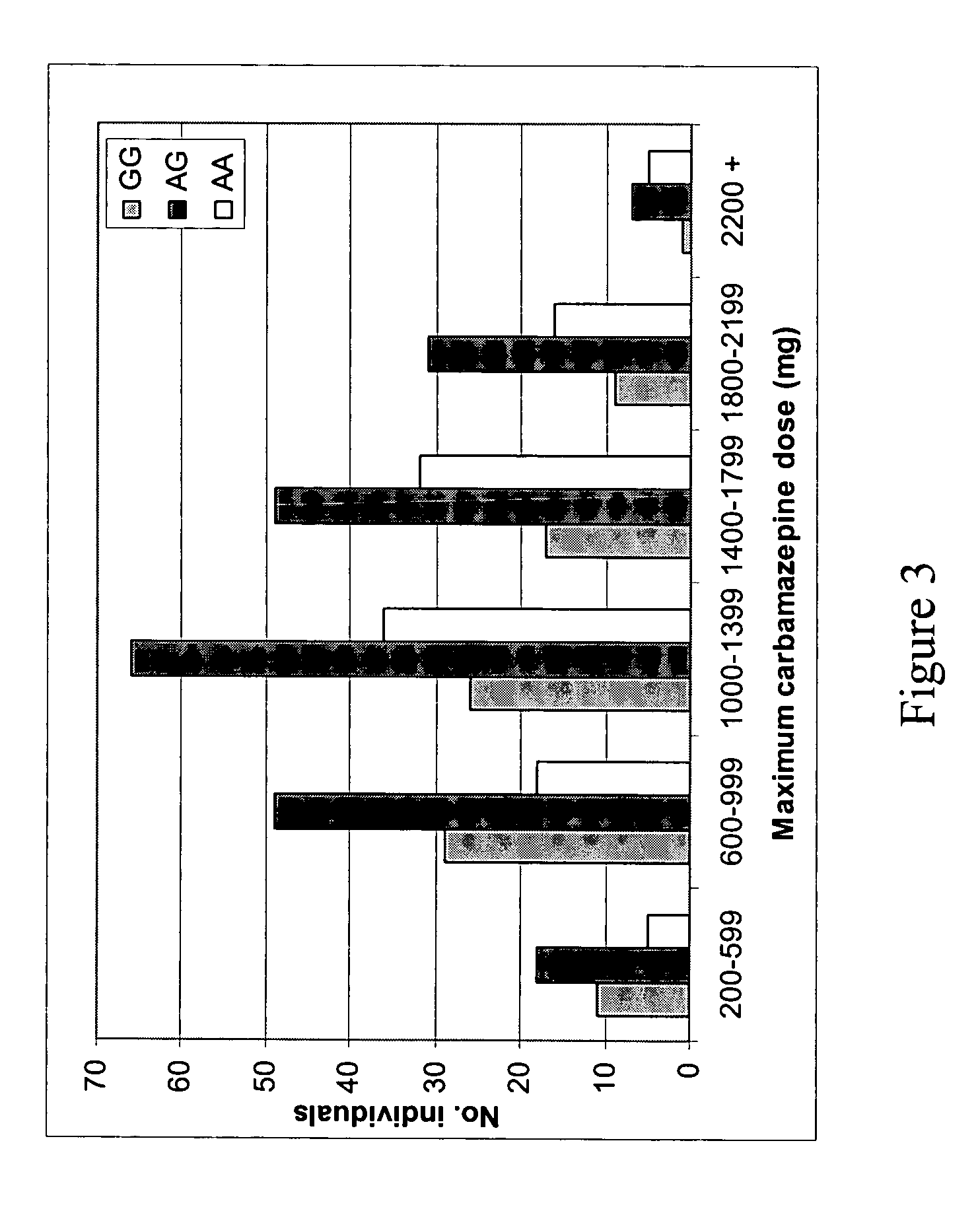Genetic predictor for clinical use of drugs used in the treatment of neurological conditions
a gene predictor and clinical technology, applied in the direction of drug composition, nervous disorder, biochemistry apparatus and processes, etc., can solve the problems of difficult and lengthy process of controlling epilepsy with phenytoin, and achieve the effect of affecting the proportion of alternative transcripts
- Summary
- Abstract
- Description
- Claims
- Application Information
AI Technical Summary
Benefits of technology
Problems solved by technology
Method used
Image
Examples
example
Materials and Methods
[0198] In this study we have considered the known functional alleles *2 and *3 at the CYP2C9 gene, and the putatively functional 3435C>T polymorphism in the ABCB1 gene. As no common functional variants are known for SCN1A, we used a haplotype tagging strategy (Weale et al., Am J. Hum. Genet. 73, 551-565, 2003). We have related variation in all three genes to the maximum dose of phenytoin in 281 patients treated with phenytoin. For carbamazepine, we related variation in both SCN1A and ABCB1 to maximum dose in 425 patients. Finally, we tested for association with presence or absence of ADRs. There were no significant violations of Hardy Weinberg equilibrium after Bonferroni corrections for multiple comparisons. In most, but not all cases the maximum dose used here will also be the maintenance dose, since starting doses tend to be lower than what is required (see discussion below).
Subjects
[0199] The study was approved by the relevant institutional Ethics Commit...
PUM
| Property | Measurement | Unit |
|---|---|---|
| voltage-sensitive | aaaaa | aaaaa |
| time | aaaaa | aaaaa |
| enzyme activity | aaaaa | aaaaa |
Abstract
Description
Claims
Application Information
 Login to View More
Login to View More - R&D
- Intellectual Property
- Life Sciences
- Materials
- Tech Scout
- Unparalleled Data Quality
- Higher Quality Content
- 60% Fewer Hallucinations
Browse by: Latest US Patents, China's latest patents, Technical Efficacy Thesaurus, Application Domain, Technology Topic, Popular Technical Reports.
© 2025 PatSnap. All rights reserved.Legal|Privacy policy|Modern Slavery Act Transparency Statement|Sitemap|About US| Contact US: help@patsnap.com



